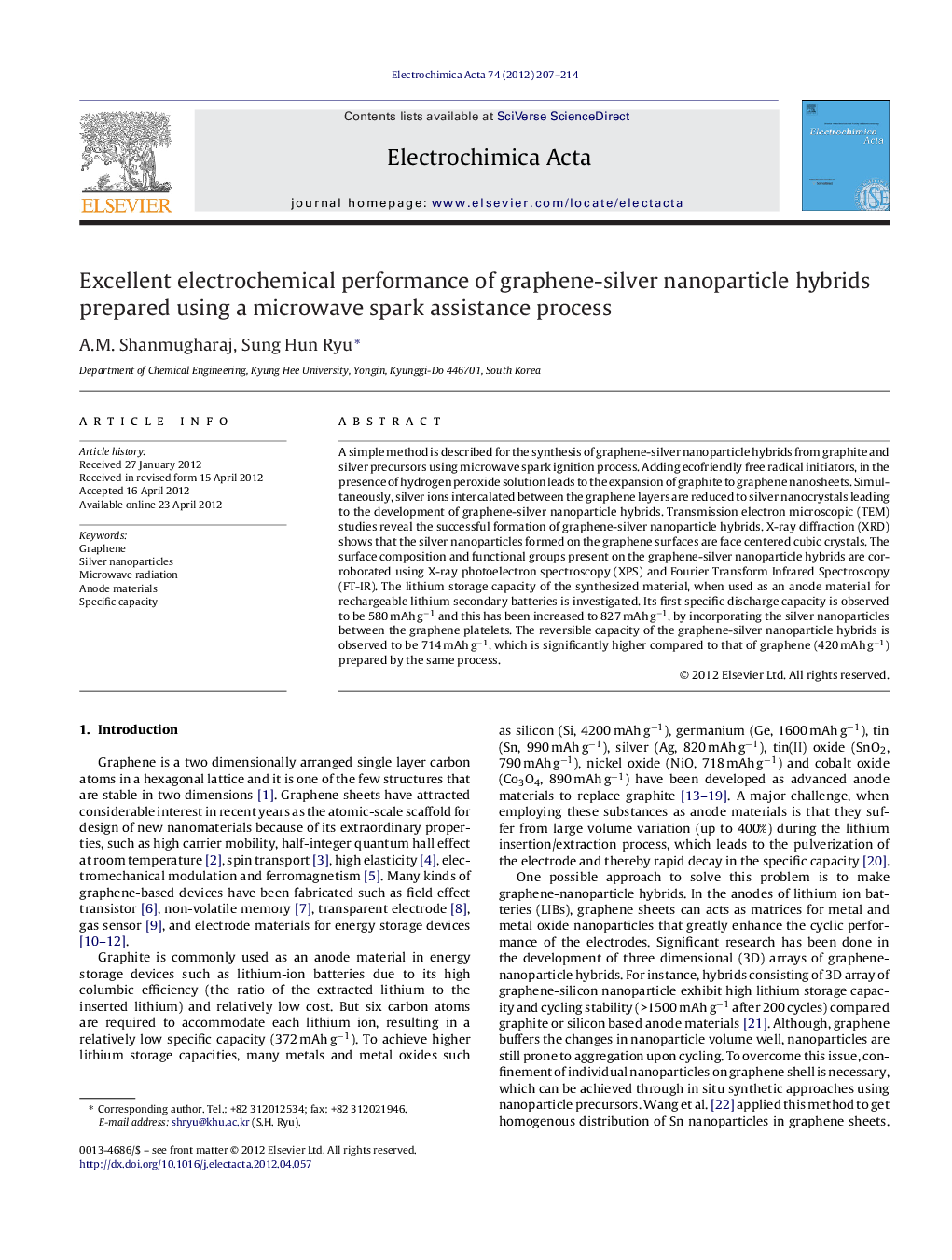| Article ID | Journal | Published Year | Pages | File Type |
|---|---|---|---|---|
| 188573 | Electrochimica Acta | 2012 | 8 Pages |
A simple method is described for the synthesis of graphene-silver nanoparticle hybrids from graphite and silver precursors using microwave spark ignition process. Adding ecofriendly free radical initiators, in the presence of hydrogen peroxide solution leads to the expansion of graphite to graphene nanosheets. Simultaneously, silver ions intercalated between the graphene layers are reduced to silver nanocrystals leading to the development of graphene-silver nanoparticle hybrids. Transmission electron microscopic (TEM) studies reveal the successful formation of graphene-silver nanoparticle hybrids. X-ray diffraction (XRD) shows that the silver nanoparticles formed on the graphene surfaces are face centered cubic crystals. The surface composition and functional groups present on the graphene-silver nanoparticle hybrids are corroborated using X-ray photoelectron spectroscopy (XPS) and Fourier Transform Infrared Spectroscopy (FT-IR). The lithium storage capacity of the synthesized material, when used as an anode material for rechargeable lithium secondary batteries is investigated. Its first specific discharge capacity is observed to be 580 mAh g−1 and this has been increased to 827 mAh g−1, by incorporating the silver nanoparticles between the graphene platelets. The reversible capacity of the graphene-silver nanoparticle hybrids is observed to be 714 mAh g−1, which is significantly higher compared to that of graphene (420 mAh g−1) prepared by the same process.
► A simple synthesis route is explored in preparing graphene-metal nanoparticle hybrids using cost effective microwave radiation process. ► Electrochemical performance of the synthesized graphene-silver nanoparticle hybrids have been compared with graphite and silver nanoparticle based anode materials. ► Graphene-silver nanoparticle hybrid exhibits stable charge/discharge characteristics of 714 mAh g−1 and it is significantly higher compared to natural graphite and silver based electrodes.
